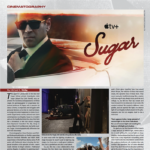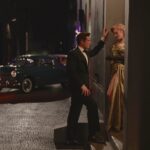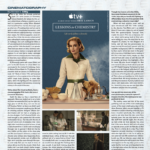
An Interview with DP George Richmond…
The most surprising thing about the new movie Rocketman isn’t that the life and times of British pop music icon Elton John were developed into a movie script and transferred to the Big Screen. What’s difficult to fathom is why it’s taken so long to realize such a cinematic project.
Starring Taron Egerton as the bespectacled piano-playing singer, Rocketman captures the rock star’s spaced-out odyssey, from pudgy misfit Reginald Dwight to superstar Elton Hercules John, a talented, but troubled, substance-dependent global music phenomenon.
Elton’s story is grist for the Hollywood dream factory. In the late 1960s, Dwight was still formulating his songwriting skills, onstage persona, and personal identity. But by the mid-1970s Elton John was synonymous with celebrity and flash — as ubiquitous as his untouchable contemporaries Pink Floyd, Led Zeppelin, Eagles, Rolling Stones, and Fleetwood Mac. At his finest Elton fused sublime piano balladry with symphonic arrangements, as well as raunchy rock with country and gospel. In the biography, Captain Fantastic: Elton John’s Stellar Trip Through the ‘70s, author Tom Doyle estimates that in 1975, alone, revenue from Elton’s albums totaled two-percent of the world’s record sales.
Elton’s classic material, from Goodbye Yellow Brick Road to the semi-autobiographical Captain Fantastic and the Brown Dirt Cowboy, was populated with a cast of characters sculpted by the troubadour’s songwriting partner and lyricist Bernie Taupin. These sonic vignettes, or musical movies, spotlight the unglamorous, the lost, ill-fated, even the suicidal.
Visionary and often-haunting songs, combined with creative storytelling and inspired visuals, converge in Rocketman. So much so that the phrases “true fantasy” and “musical fantasy” have been used interchangeably to describe the overall mood of the film and the zeitgeist of Elton’s personal saga. “I can’t stress enough that what we did with Rocketman was a full-on, warts-and-all project,” cinematographer George Richmond tells PLSN. “We didn’t pull any punches.”
The concept of true fantasy is, of course, paradoxical — as paradoxical as Elton was, himself, in the 1970s. Draped in flashy, sometimes outlandish, stage costumes Elton was a sequined-suited rock superhero to some. Yet, privately Elton combatted personal demons and debilitating insecurities, often while detached from reality, cruising high above the world in his very own jet airliner dubbed the Starship.
In bringing the vivid, even contradictory, details of Elton’s life to the screen, the filmmakers hoped to accomplish more than just telling the story of a singer-songwriter transforming into pop idol. Says Richmond, Rocketman is a “journey of color.”
For visual reference, Cinematographer Richmond turned to only a few sources, including the photography of David LaChapelle, who captured Elton at various stages in his career. The subject matter and creative atmosphere on set fostered bold design choices. “Dexter Fletcher is a fantastic director and collaborative,” says Richmond. “When you work in an environment like that, you work without fear. When you work without fear, you’re unafraid to try things and experiment, and that was an incredibly important platform for this movie in particular.”
When we spoke with Richmond he was back at work, shooting a new film, Free Guy, starring Ryan Reynolds and Jodie Comer. At press time, Rocketman, co-produced by Elton himself, had already begun generating serious Oscar buzz.

PLSN: The Freddie Mercury biopic, Bohemian Rhapsody, used Live Aid as a kind of plot device. Does Rocketman do something similar with Elton’s Dodger Stadium concert from 1975?
George Richmond: It doesn’t. I have to say the two films couldn’t be more different. All movies shoot wide shots and close-ups, but what we’ve done with Rocketman, it’s very much a musical fantasy. We really delve into the inner psyche, or we try to, of a man who is a massive musical talent, who then gets into rock ‘n’ roll and seduced by the fame, drugs, stardom.
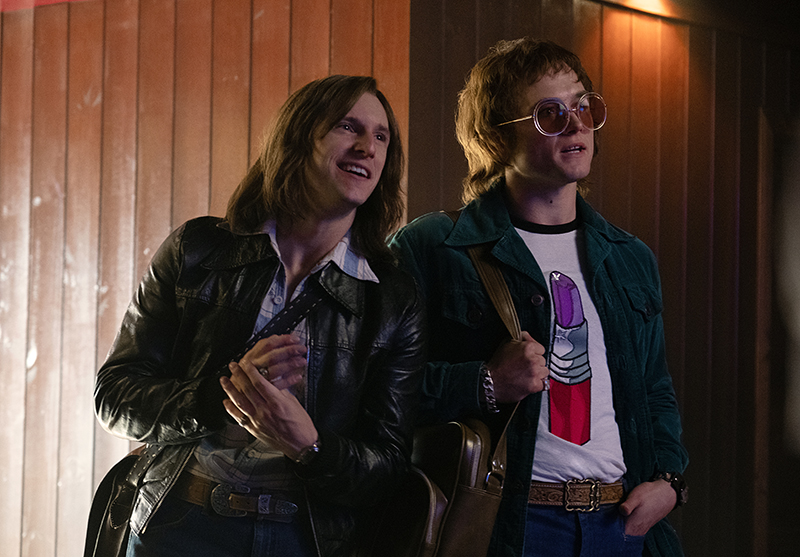
Rocketman has been touted as “true fantasy.” How did you interpret that phrase?
We dealt with the idea of musical fantasy in the musical numbers. There’s a few standout sequences. In the first sequence, Elton’s in therapy and meets his younger self, who leads him out of the doorway of the therapy room into a 1950s street, in Pinner, where he grew up. Elton follows him, wearing this orange suit with big red wings, black tips, and devil’s horns. Elton John as his younger self is in color and we de-saturate the world around him. He’s led into the street, into the front of his house, and there’s a song and dance number on “The Bitch is Back.” His mum [Bryce Dallas Howard] then comes out and slaps him out of his fantasy and screams, “You’re dinner is cold. Get in the house.” We sort of bleed the color back over Bryce’s medium shots.
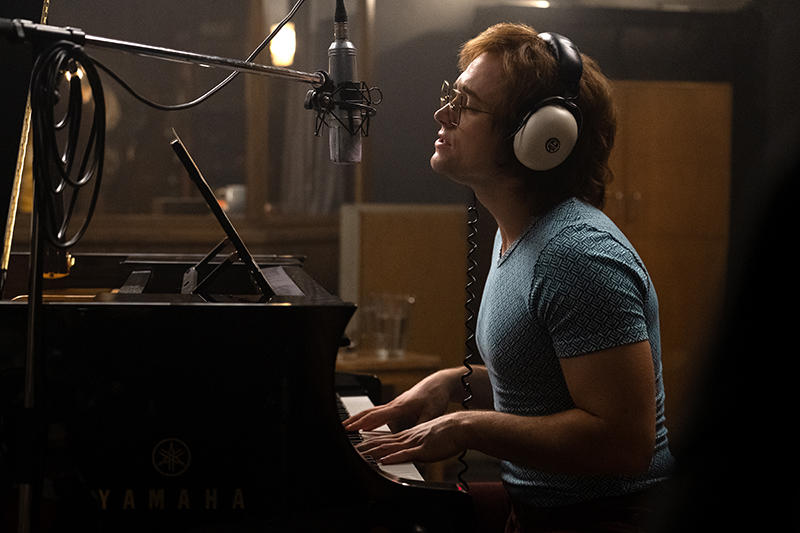
Do you return to that de-saturated approach later in the film?
We just used it for that sequence. I’d used this phrase in another interview: We tried to create a “journey of color.” We introduce color as Elton gets older and his life more fantastical. The sequence for “Bennie and the Jets,” that musical number where he steps into a nightclub in the underworld of New York, what we call New York Underland, is fully saturated. Another sort of fantasy sequence…. was “Rocket Man (I Think It’s Going To Be A Long, Long Time.” Elton is at a party at his California mansion. All his family is downstairs and all his clingers-on, all those characters, are at the party, and he is on a lot of drink and pills and cocaine. He goes out to the party, gets on the diving board and announces, “For my next trick, I’m going to kill myself.” He then throws himself into the swimming pool. We dive down to the bottom of this impossibly large swimming pool with him to meet his 16-year-old self, who is wearing a space suit, playing a mini piano to a rearranged “Rocket Man.” Elton gets pulled out of the water, put on a gurney and into an ambulance, all while singing “Rocket Man.” Next, you think he’s in a hospital, but he’s actually not.…He’s getting dressed to this sort of choreographed section in silhouette against the Los Angeles skyline. Then he’s given a baseball bat and hat and walks out on stage at Dodger Stadium. He sings the chorus for “Rocket Man” and stands in the front of the stage with his arms open and becomes a rocket. He shoots up into the sky and explodes like a firework. There’s a snap cut to Elton reclining in a chair with a bit of smoke coming out the top of his head, on his jet.
How did you light the pool scene?
The first shot we did was in a real swimming pool. So we had a Hydrascope [a crane/mount/platform] that can be dunked under water. We also had an underwater remote head. We followed [Elton] from the diving board into the swimming pool and then we cut to a tank — the Pinewood studio tank — where we put a swimming pool floor at the very bottom of it, and we blacked out the edges and gave a little bit swimming pool edging at the very top. It was like a 20-feet deep swimming pool. We then go underwater with HydroFlexes [camera case]. We have an underwater cameraman, Mark Silk, who worked with me on the Kingsman films. Mark worked with his daughter, who was operating another camera. For lighting I used an ARRI ARRIMAX 18K hanging on a camera crane, from above, and then we made a small softbox underneath. We tried to keep it as natural as possible.
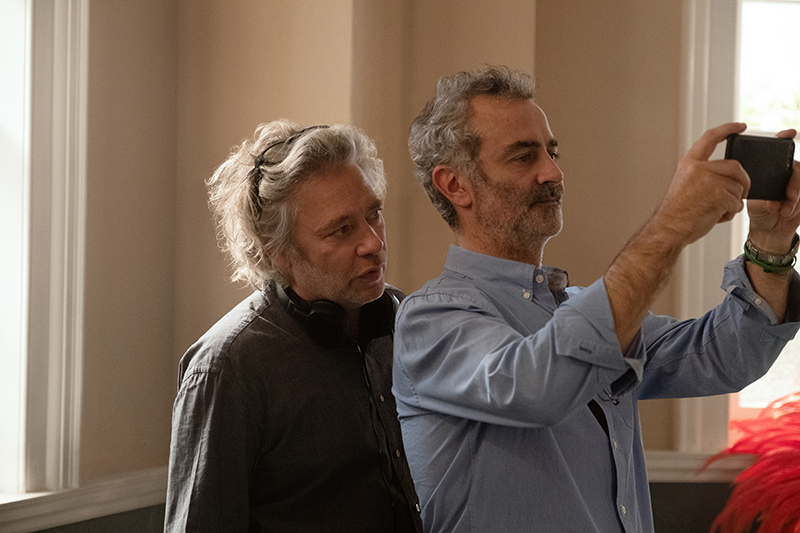
In the Troubadour club sequence, Elton floats on air. How did you approach this scene?
That is another piece of fantasy. This was his breakout moment in which Elton played to a small crowd but was plastered all over the press in America. It kick-started his career. Dexter came up with the idea that in the musical break in “Crocodile Rock,” which was rearranged by Giles Martin, Elton would levitate and all the crowd would rise up into the air. They get lost in the music, but his band members, his manager and Bernie Taupin stay grounded, being onlookers who see how magical this is.
Did you go to Los Angeles to film?
We did not go to the Troubadour and shoot in Los Angeles, so we built our own version and put our own lights in. We shot this in Stage Two in Bray Studios, in England, where they made some of the classic Hammer horror movies. We put in a rig to lift the crowd and, obviously, Taron, as well. It was all electronic winches.
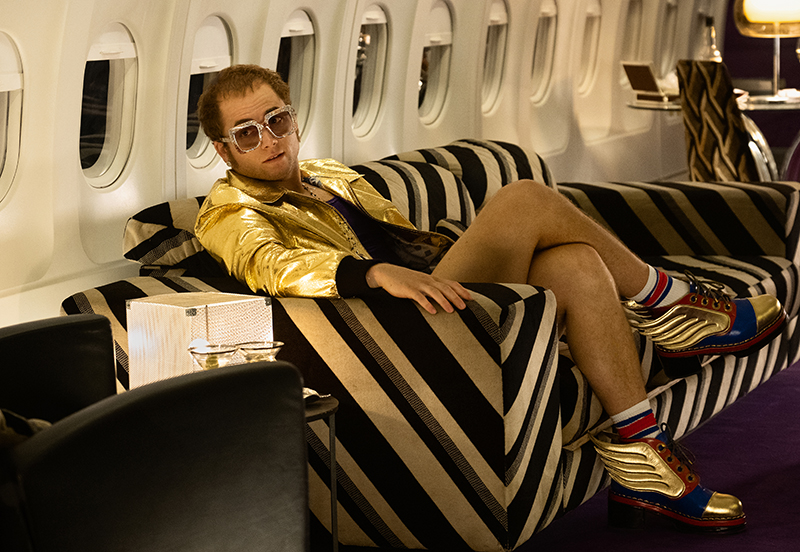
So, Dodger Stadium is green screen…
We built the Dodger Stadium stage and wrapped it in green screen. We shot part of the movie at Bray. The nice thing about Bray Studios is they have a two stages and a big back lot. It was not like a normal studio where you have a number of different productions fighting for space. We were the only ones in there. Because they only had those stages and they are not huge, we needed more space. The other space we found was a big warehouse in a place called Greenford. I think there were nine sets in two warehouses.
How did you light the Troubadour and Dodger stadium sets?
We used a lot of old lights. We used Par cans and Molefay Fours, with four 650-watt bulbs in each fixture, which they actually had on stage there at Dodger Stadium [in 1975]. Because we live in a modern world, I mixed the Par cans and the Molefays with my own LED softboxes. All the lights you see in picture are all period. The LED stuff sits outside of that. I think it was important to use as much LED as possible, because we are trying to reduce our footprint. We also used a lot smoke. When you use these older units, they project light through smoke better and make more interesting shapes.
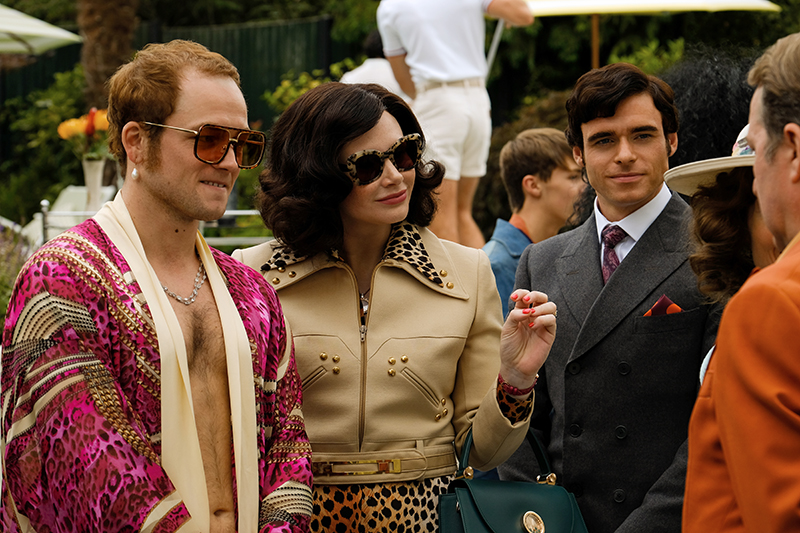
How are you controlling all of this?
Everything runs through a grandMA and we controlled it on set through an iPad.
How did the concept of color impact your choice in lighting?
Basically as a contrast. When we were shooting the stuff of Elton’s younger life we kept the light quite clean and we didn’t force a lot of color into anything. I de-saturated into the grays and we didn’t put a lot of color into the sets. When we get to the “Bennie and the Jets” sequence, the beginning of the third act, where Elton is out-of-control, we lit the sets with red, purple and gold. We ran lighting cues and shifted the color throughout the sequence. My approach was to shoot in daylight, so we had the camera in its native color temperature. It makes tungsten this beautiful golden color. The fittings we used for that were pretty much all LED, apart from the tungsten for that golden color.
You seem to capture a dreamlike atmosphere…
We tried to use all these tools to accentuate his frame of mind as you’re travelling with him through the film.
You worked with Taron Egerton on the Kingsman films. Is there any crossover, as far as design, with those films?
The crossover was that we shot on anamorphic. The films for Matthew [Vaughn, director Kingsman films], we shoot anamorphic. I wanted to stay away from that trend of large format cameras for Rocketman and not have too much resolution, because I think that wouldn’t have fit what we were doing. Using the anamorphic lenses makes the images look a little bit older. We are dealing with a spiraling out-of-control man under the influence of alcohol and drugs and excess, let’s say. A clean, pristine image would be inappropriate.
With all that memory recall, maybe you want something grainy.
Not necessarily the grainy aspects, but you use the lenses to soften the images for you and make it feel a little bit older. With digital photography and digital projection people are quite accustomed to seeing these images now. I tend to use the glass that’s going onto the camera to introduce the look, and I think that’s the one thing that has the biggest impact on the way a digital camera will perform.
We’ve referenced Bohemian Rhapsody, but Rocketman seems to be more psychologically based, which means it could be more visually interesting…
It’s a world of fantasy, but you constrain yourself and keep on your path. We really poured our hearts and souls into this. It’s like a dark art or dark magic on whether a project does well or not. Records are like that. It’s kind of the same with film, isn’t it?
